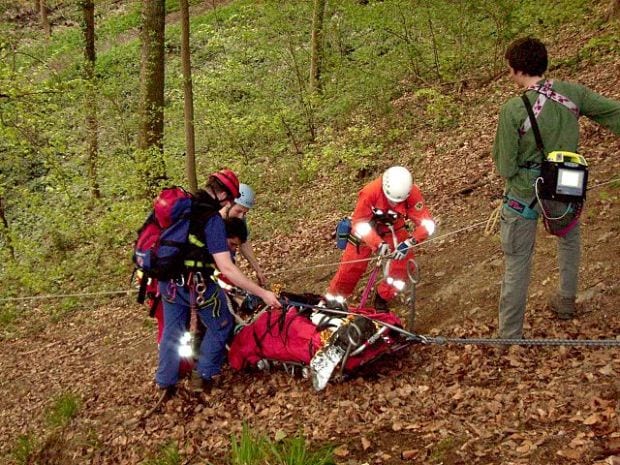The science of Search and Rescue
When someone is lost in the woods, it often becomes the responsibility of the search and rescue teams to find them. It’s not a simple as one may think, however. The grid lines they follow need to be designed to increase the ability to find the lost person by maximizing the area able to searched while still having a better than average chance of detecting said lost person.

The grid lines are also known as Sweep Width (W), and the distance between them is simple if you have a chart. While the US Navy and US Coast Guard have well-defined values for maritime and aeronautical environments based on multiple studies, on land there are many more environment types and not enough studies have been done to create a value for each one.
That’s where this paper comes in. They attempt to describe a quick and dirty method of determining W for the innumerable situations where a search and rescue operation has to take place in an area without prior calculations. The method by which they do this is fairly ingenious.
They did a total of 10 experiments in different environments at different times of the year. Each time, they measured the distance to first detection (Rd), the distance at which a located object could no longer be located (Re). They also measured a value known as the Average Maximum Detection Range (AMDR) which is an average of Rd and Re from the 8 compass points. Measurements were performed using high, medium, and low visibility objects.
What they found was interesting indeed. First, the differences between AMDR and Rd were so small that they were effectively equal. This is useful, as Rd is much easier to measure as it does not require equipment. Second, Rd had a good correlation with the W. This was true for all types of objects, but if they broke it down by high, medium, and low visibility they still had positive correlation. However, correlation wasn’t as strong for medium and low, but this might be due to sample size.
In the end, what they found was simply taking the Rd for any given object in any given environment, you could multiply by the correction factor to find W. The values they obtained were 1.773 for high visibility, 1.556 for medium, and 1.135 for low. In practice this would mean for a medium visibility object detectable at, say 20 m, then the detection index would be 31.12 m, which would how far apart the grid lines would be. The authors feel so strongly about their calculations that they recommend SAR teams to start using them, and without any evidence to the contrary, I’m inclined to agree. Sure, I’d like more studies before wholeheartedly endorsing it, but when the alternatives are basically guessing, this is probably better.
Koester RJ, Chiacchia KB, Twardy CR, Cooper DC, Frost JR, Robe RQ. Use of the visual range of detection to estimate effective sweep width for land search and rescue based on 10 detection experiments in North America. [PMID 24462331]

EBM Gone Wild
Wilderness Medicine
Emergency physician with interests in wilderness and prehospital medicine. Medical Director of the Texas State Aquarium, Padre Island National Seashore, Robstown EMS, and Code 3 ER | EBM gone Wild | @EBMGoneWild |
